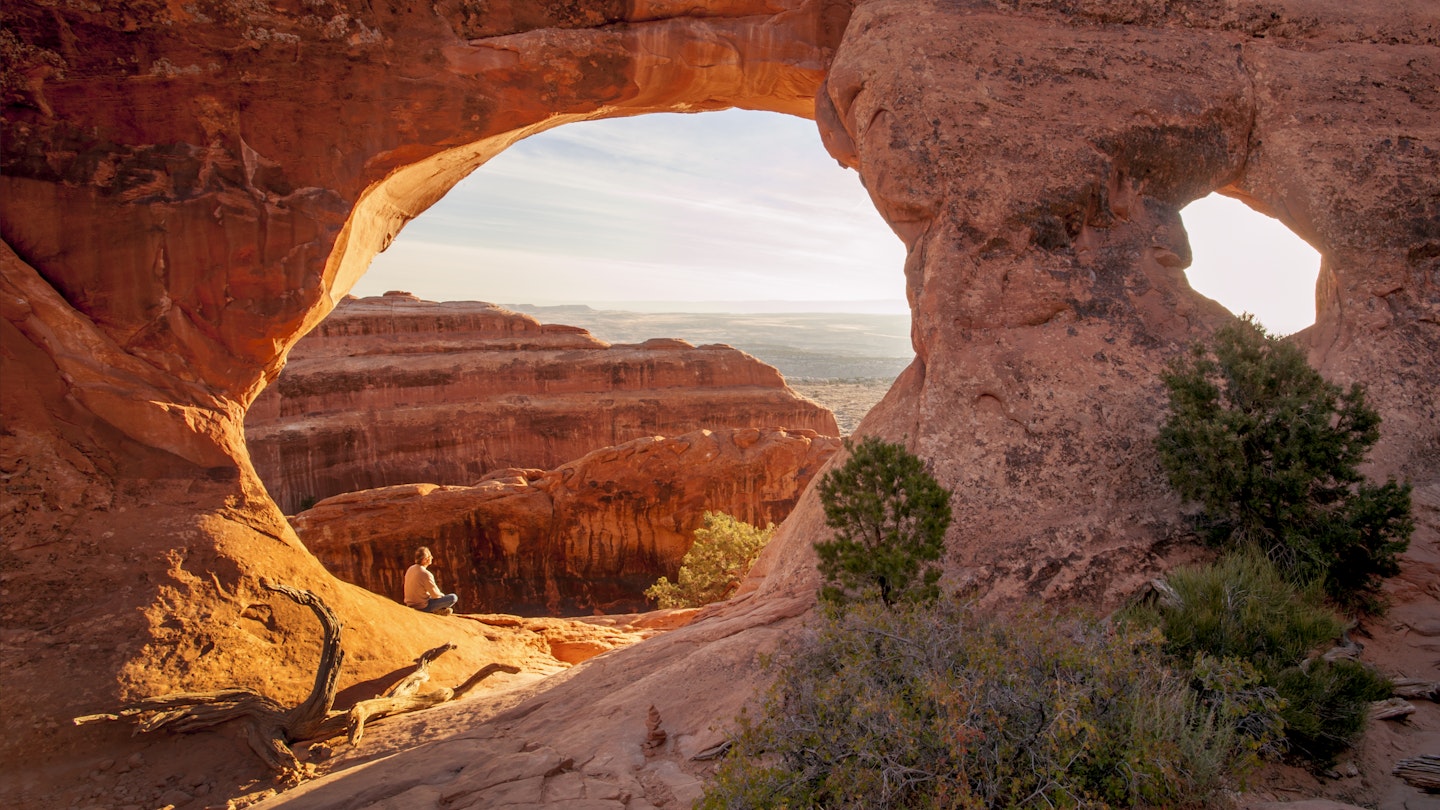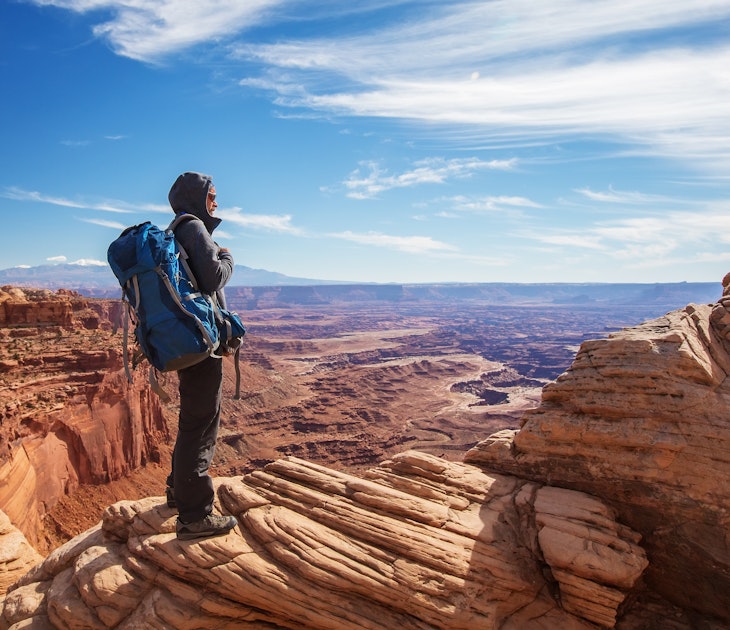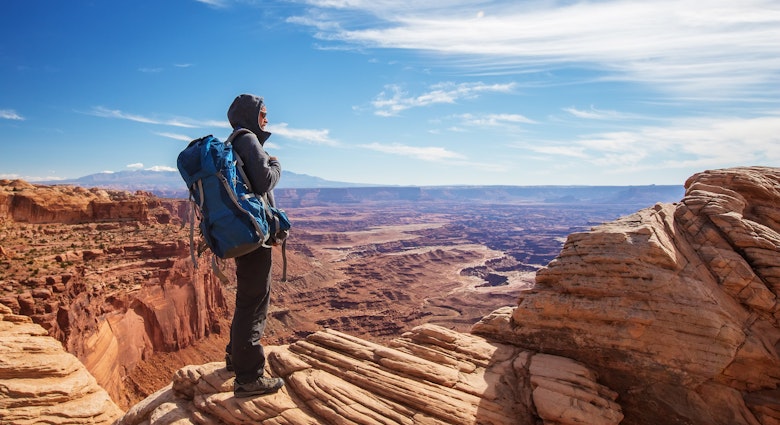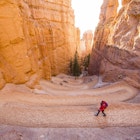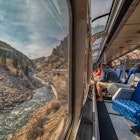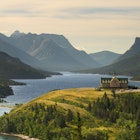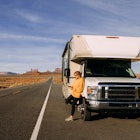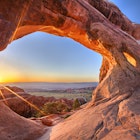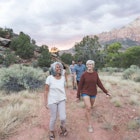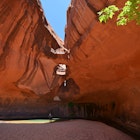Since time immemorial, Mother Nature has been hard at work in Arches National Park, famous for its namesake rock formations that splash soaring arcs of red-orange sandstone against the bright blue sky of Utah. True to its name, Arches has the highest concentration of natural stone arches of anywhere on Earth, from the graceful 306ft-long Landscape Arch to tucked-away Delicate Arch, a Utah icon so photo-worthy that it’s emblazoned on the state’s license plates.
One of Utah’s "Mighty 5" national parks, Arches is a world of geological wonders, and its giant rock fins, precariously balanced rocks and iconic formations draw in hundreds of thousands of visitors every year. Here’s what you need to know to plan an awesome trip to Arches National Park.
When should I go to Arches National Park?
Weather-wise, the best time to visit Arches National Park is in April, May, September or October, but these months are also some of the busiest. The number of park visitors soars around public holidays (Memorial Day at the end of May, Labor Day in early September) and in the summer months of June to August when kids are out of school.
Arches National Park typically brings in the most visitors in May, but if you can contend with freezing and potentially snowy weather, January sees way fewer arch-gawkers. In fact, January 2023 had 143% fewer visitors than May of that year, according to National Park Service statistics.
In 2022, Arches National Park implemented a timed entry system to manage the number of visitors during peak times. From April 1 through October 31 between 7am and 4pm daily, travelers must have a timed entry ticket to get inside the park. Read more on Arches’ timed entry below.
While visiting Arches National Park in summer is popular, be aware that daytime temperatures are searingly hot, and the red-rock desert landscape provides precious little shade. The high temperature in July can hit 100°F (38°C) – certainly not a time to hike to totally exposed Delicate Arch, especially if you have little ones in tow.
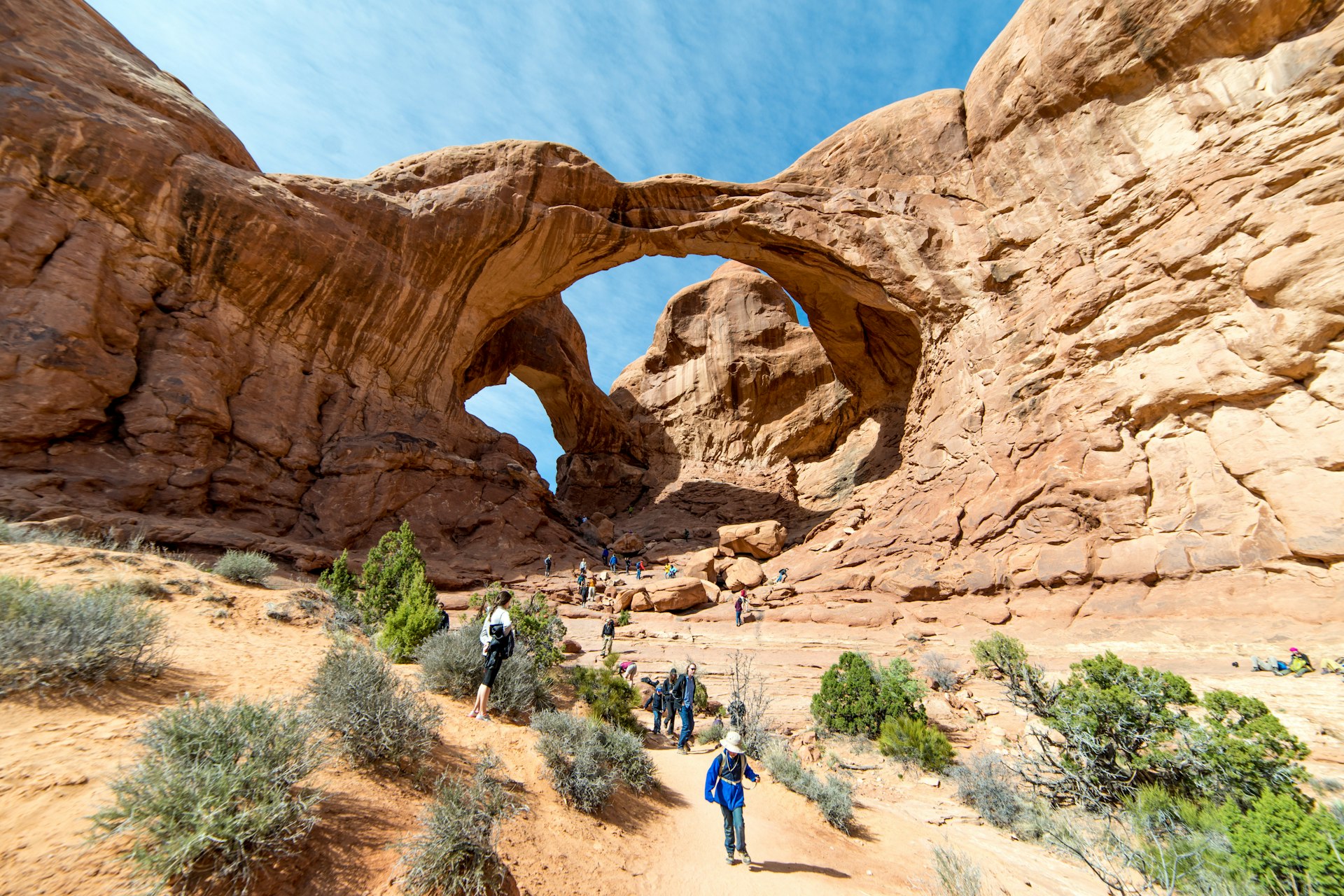
How much time should I spend at Arches National Park?
If you don’t have much time, you can see the highlights of Arches National Park in half a day. If you can manage it, though, you should stay for at least a few days longer to add in some of Utah’s best hikes and other activities around the gateway town of Moab. Another national park, Canyonlands, awaits just across the highway.
The only paved road in Arches National Park winds 18 miles from the visitor center to a final loop at Devils Garden before doubling back. If you have limited time at Arches, set off on this scenic drive, stopping at all the roadside viewpoints and trailheads for short hikes that you can fit in. Some of the best pit stops are Balanced Rock, a 3600-ton boulder as big as a naval destroyer that teeters atop a spindly pedestal; The Windows, to scramble below the tallest arch in the park; and Lower Delicate Arch Viewpoint, where you can take a 100ft, no-elevation-change trail to see the most famous formation in the park from a distance.
With more time, tackle the longer trails in Arches, such as Devils Garden, Delicate Arch and Fiery Furnace, if you manage to score a permit. Don’t forget that the arches don’t end at the park boundaries – Moab and its stunning red rock surroundings have tons to do, from quieter hikes to whitewater rafting, rock climbing and canyoneering.
Is it easy to get to and around Arches National Park?
Yes, but you need a car to get the most out of a visit to Arches National Park. The distances between viewpoints and trailheads are vast, and the park does not have a shuttle system or public transport. Parking can be tricky at popular trailheads, and you might have to wait for a spot to open up at busy times.
Some companies in Moab run bus tours through Arches, showing you around the national park in their vehicles.
The small Canyonlands Field Airport, 18 miles north of Moab, has flights to Denver and Salt Lake City, though most visitors fly into these larger airports and then drive to Arches National Park. For a super scenic arrival, take Amtrak’s cross-country California Zephyr train, which stops in Green River, north of Moab or Rocky Mountaineer’s Rockies To The Red Rocks service between Denver and Moab.
Have wheels and want to see more of Utah? Check out these top road trips.
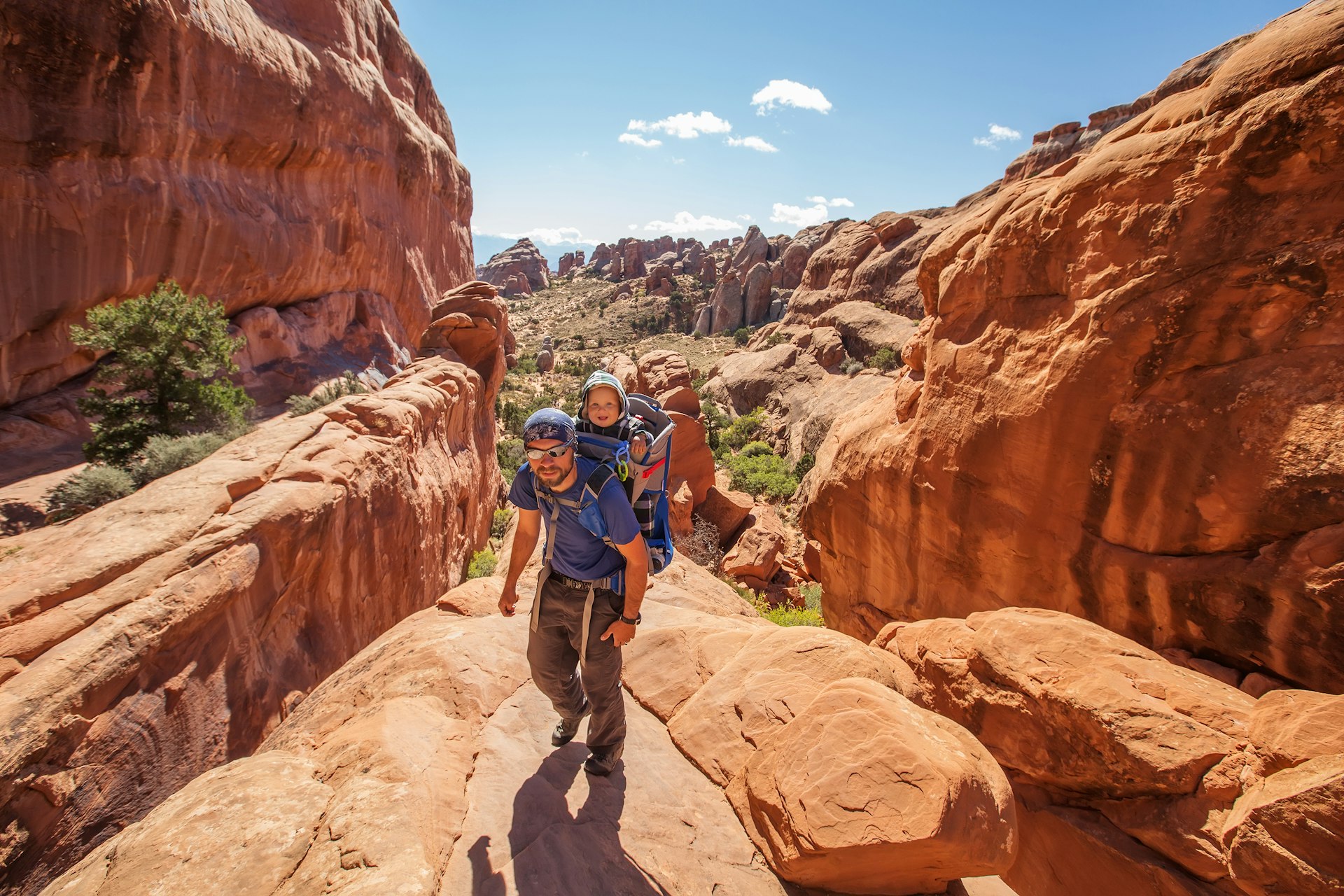
Top things to see and do
Many of Arches’ main sights are close to paved roads, so a scenic drive through the heart of the park is a must, and it makes the spectacular scenery accessible to all.
Delicate Arch is the most popular hike in the park, and it’s worth the sweat equity it takes to reach the stunning conclusion: the "cowboy chaps" hidden around a bend, not visible for most of the journey.
The Windows area has more (and more accessible) arches if you’re not up for a steep hike. The easy one-mile loop trail gently climbs to three massive photogenic arches, and it’s hard to grasp the immensity of these gigantic marvels until you’re beside them. Don’t miss the "bonus arch" accessible from the same parking lot: Double Arch is the tallest in the park at 112ft (34m).
The narrow sandstone maze of Fiery Furnace, named for its spectacular rock formations that glow red and orange in the sunset, is one of the most adventurous hikes in the park. Permits are required because of the advanced level of navigation and fitness needed. Online maps and GPS do not work well when you’re sandwiched within the high slot canyon walls, and some sections require jumping across ledges and shimmying through crevices.
Permits allow you to join a ranger-led tour or set out on your own self-guided adventure, and it’s recommended that first-timers hike with a ranger. Buy Fiery Furnace permits on recreation.gov a week in advance, but be quick – they sell out within minutes.
If you're traveling in Utah with kids, we have you covered with the best things to do on a family trip.
My favorite thing to do at Arches National Park
For the sheer number and variety of arches, Devils Garden is my favorite thing to do in Arches National Park. Within just a few minutes of departing from the parking lot, you meet Tunnel Arch and Pine Tree Arch. Landscape Arch, the longest in North America, is a short distance beyond that.
After Landscape Arch, the Devils Garden Trail becomes much more difficult, requiring scrambling and route-finding. If you’re up for an adventure, it’s worth continuing on for even more arches and a 150ft rock column called Dark Angel. The crowds drop off significantly, and when you sit down for a snack, you might even get an arch all to yourself.
If you have the navigational know-how, take the Primitive Trail back to the trailhead. This route is marked by cairns, but it's helpful to have a map pre-downloaded. The Primitive Trail wiggles through rock fins, scrambles up and down steep slopes and drop-offs and crosses a pool that could be filled with water at certain times of the year. Hopping around and scooting down the rocks makes Devils Garden feel like a jungle gym, and it always gives me that sense of pure childlike joy.
How much money do I need for Arches National Park?
The standard entrance pass for Arches National Park costs $30 per vehicle, and it’s valid for seven days. If you’re visiting more national parks on a road trip through Utah and beyond, it’s worth buying the America the Beautiful pass for $80. The America the Beautiful pass is valid for a year at all national parks and federal recreation land across the country for one vehicle or four per-person entry fees – arguably one of the best travel deals available.
There’s only one place to stay inside Arches National Park: Devils Garden Campground ($25 per site per night).
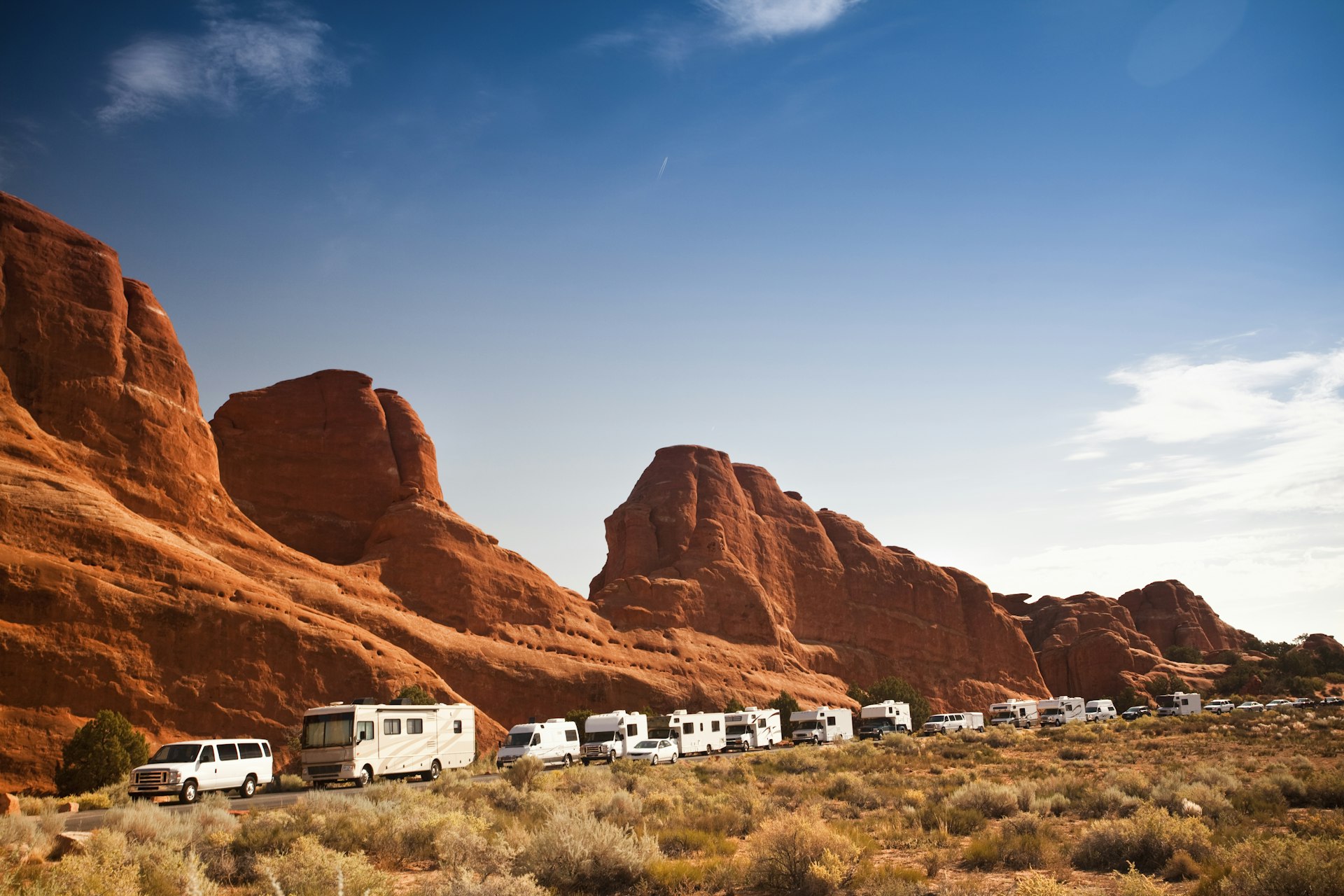
Do you need timed entry tickets to visit Arches National Park?
If you're planning to visit Arches National Park between 7am and 4pm from April through October, you must reserve an hour-long entry window on recreation.gov. During this time, Arches sees a huge influx of visitors, and to reduce crowding, visitors are required to get a timed entry ticket, which costs $2 and does not include the park entry fee.
You do not need a permit to visit outside of these times. For example, if you want to go to Arches National Park in May but don’t have a timed entry ticket, you can enter the park before 7am or after 4pm (but make sure you get there early enough – a line of cars still forms in the morning). The National Park Service website has a helpful Timed Entry FAQ for Arches National Park.
What is the closest city to Arches National Park?
Moab, Utah, is the closest city to Arches National Park, and its northern tip is just three miles from the Arches Visitor Center. Moab’s Main St (Hwy 191) is lined with hotels, restaurants, gas stations and shops and has everything you need to stock up for your trip. Arches National Park does not have anywhere to dine inside the park boundaries.
Save this guide to the best things to do near Moab.
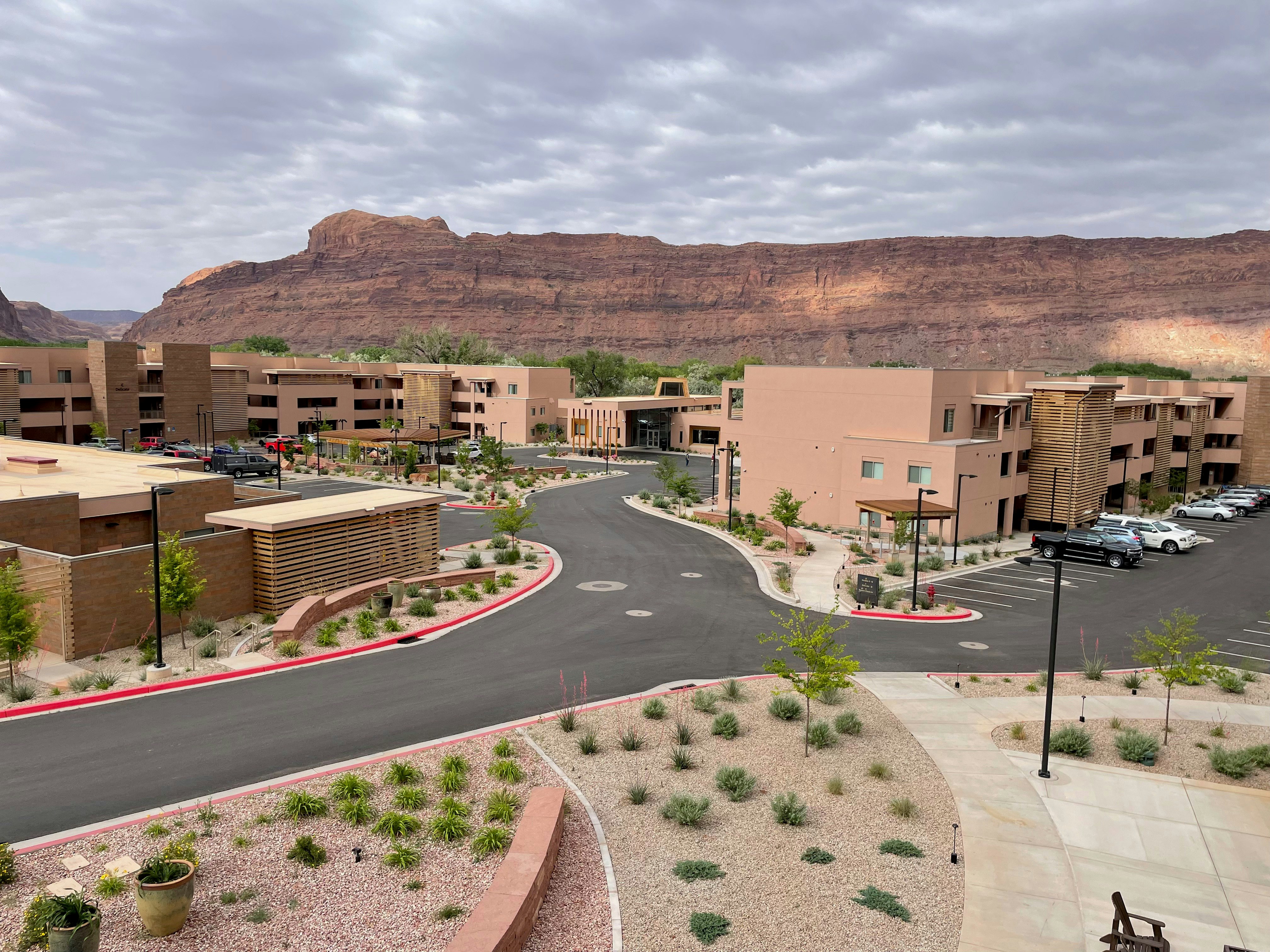
Where’s the best place to stay near Arches National Park?
Arches National Park has one campground within the park boundaries: Devils Garden Campground. Sites sell out months in advance, so get booking if you’re set on staying there. Campsites run by the Bureau of Land Management (BLM) are scattered along the Colorado River and elsewhere among the red rocks. First-come, first-served Goose Island Campground is closest to the Arches National Park entrance.
Moab has tons of hotels, and Field Station is one of my favorite spots in town. The exterior gives Motel 6 vibes, but inside, a hip millennial minimalist design takes over. The hotel hosts cool events and has a merch-filled lobby with a coffee shop. Further south and off Moab’s main strip, Red Moon Lodge is a peaceful sustainability-minded stay with organic breakfasts and welcoming hosts. Closer to nature but further from the park, ULUM Moab opened in 2023 and set up secluded luxury glamping tents with views of Looking Glass Arch. It offers free yoga sessions, evening campfire s’mores and sound-bath meditations.

